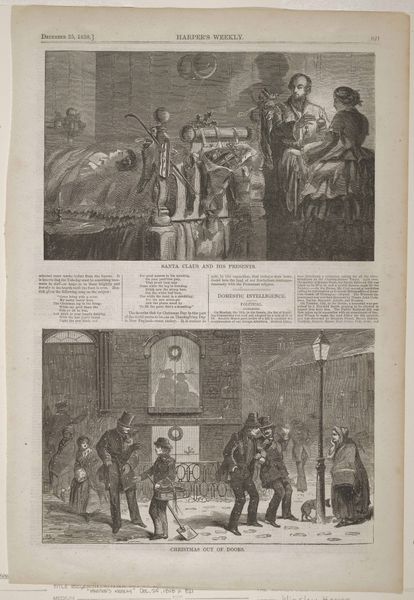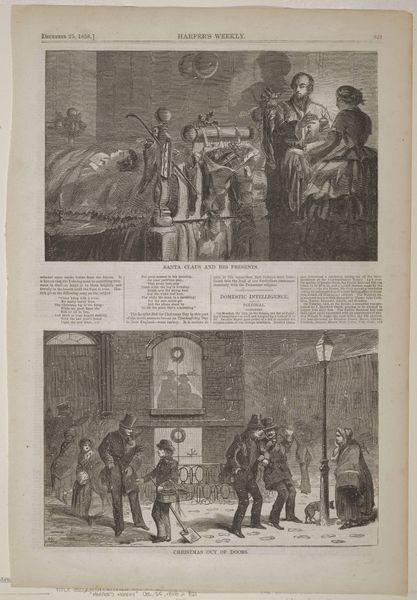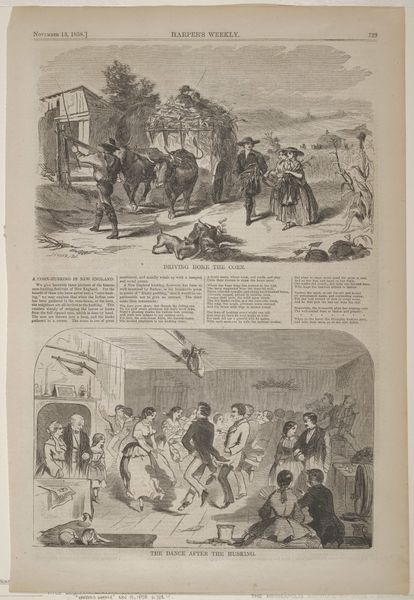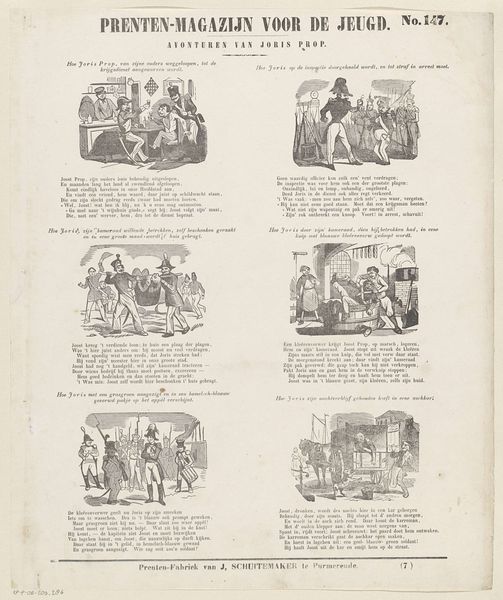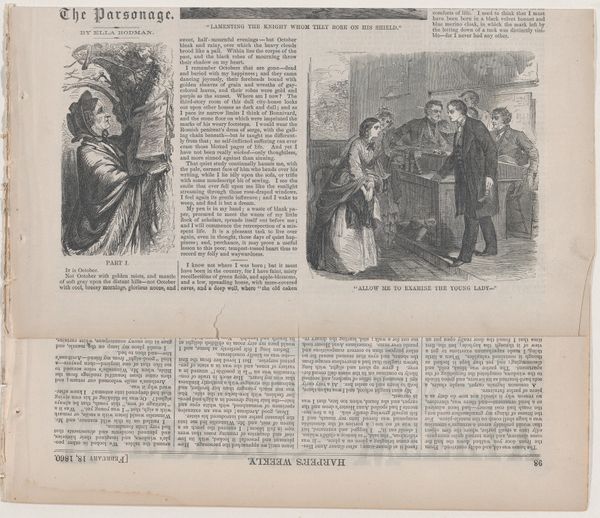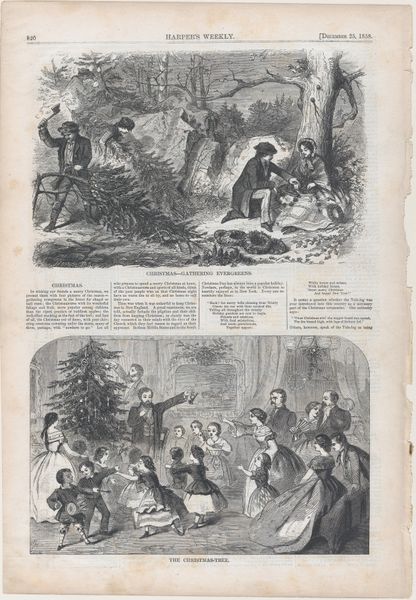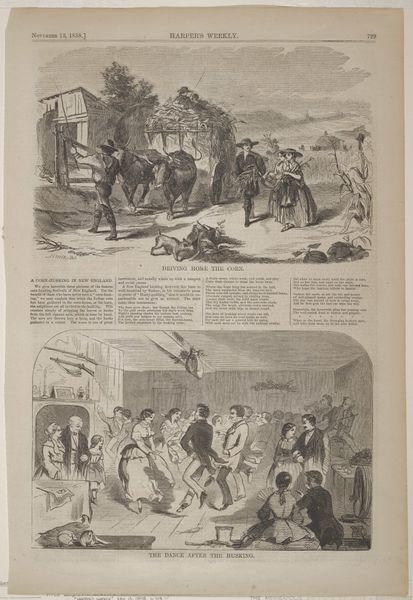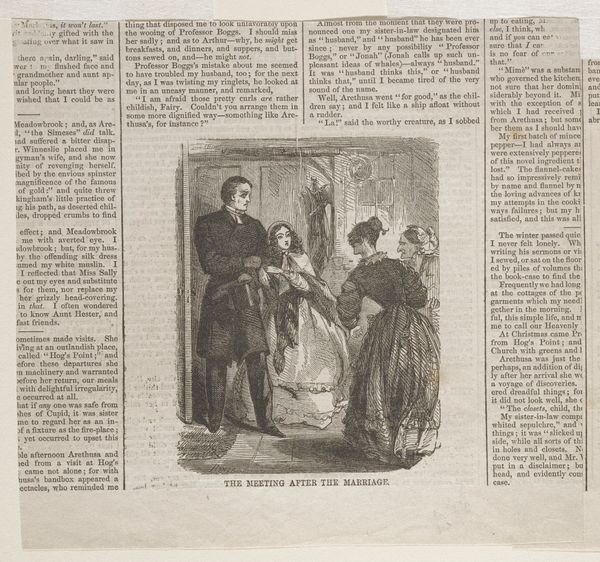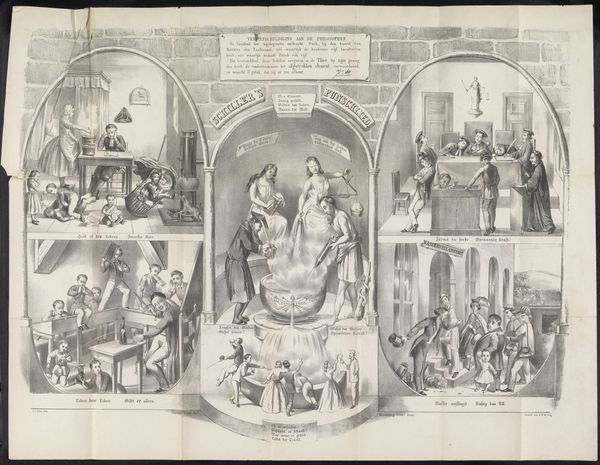
Christmas Out of Doors (from "Harper's Weekly," Vol. II) 1858
0:00
0:00
Dimensions: image: 6 x 9 1/8 in. (15.2 x 23.2 cm) sheet: 16 x 11 in. (40.6 x 28 cm)
Copyright: Public Domain
Editor: This is "Christmas Out of Doors," an 1858 engraving by Winslow Homer, originally appearing in Harper's Weekly. It's split into two scenes, a domestic interior above and a snowy street scene below, presenting a strong contrast. It feels… didactic, almost like it’s trying to say something about class. What do you make of this juxtaposition? Curator: It certainly does invite that interpretation. Homer's work frequently captures these social dynamics. Consider the timing: published on Christmas 1858. This was a period of growing social awareness, abolitionist movements gaining momentum, and anxieties about wealth disparity becoming increasingly visible. "Harper's Weekly," with its broad reach, participated in shaping public opinion. Does this suggest the meaning lies primarily in critiquing societal inequalities? Editor: Maybe... The wealthy family inside with Santa's overflowing bounty, set against the lower scene depicting harsher realities. There's the suggestion that prosperity and holiday cheer aren’t universal. It’s interesting to consider where it was published and its effect on the social conversation at the time. Curator: Precisely. Look closely at the composition: the solid building, almost forbidding, facing us, not an open door and a welcoming scene as you might find on a Christmas card. Is Homer passively reflecting society, or using his imagery to challenge his readership to engage with uncomfortable truths about the festive season? Editor: I see what you mean about challenging assumptions… Before, I saw it as contrasting the two, now it also challenges us to think deeper about the political messaging of this piece in relation to its readers at the time it was made. Curator: And this examination reveals the intricate relationship between artistic representation and the socio-political landscape, it encourages further analysis through those lines.
Comments
No comments
Be the first to comment and join the conversation on the ultimate creative platform.
